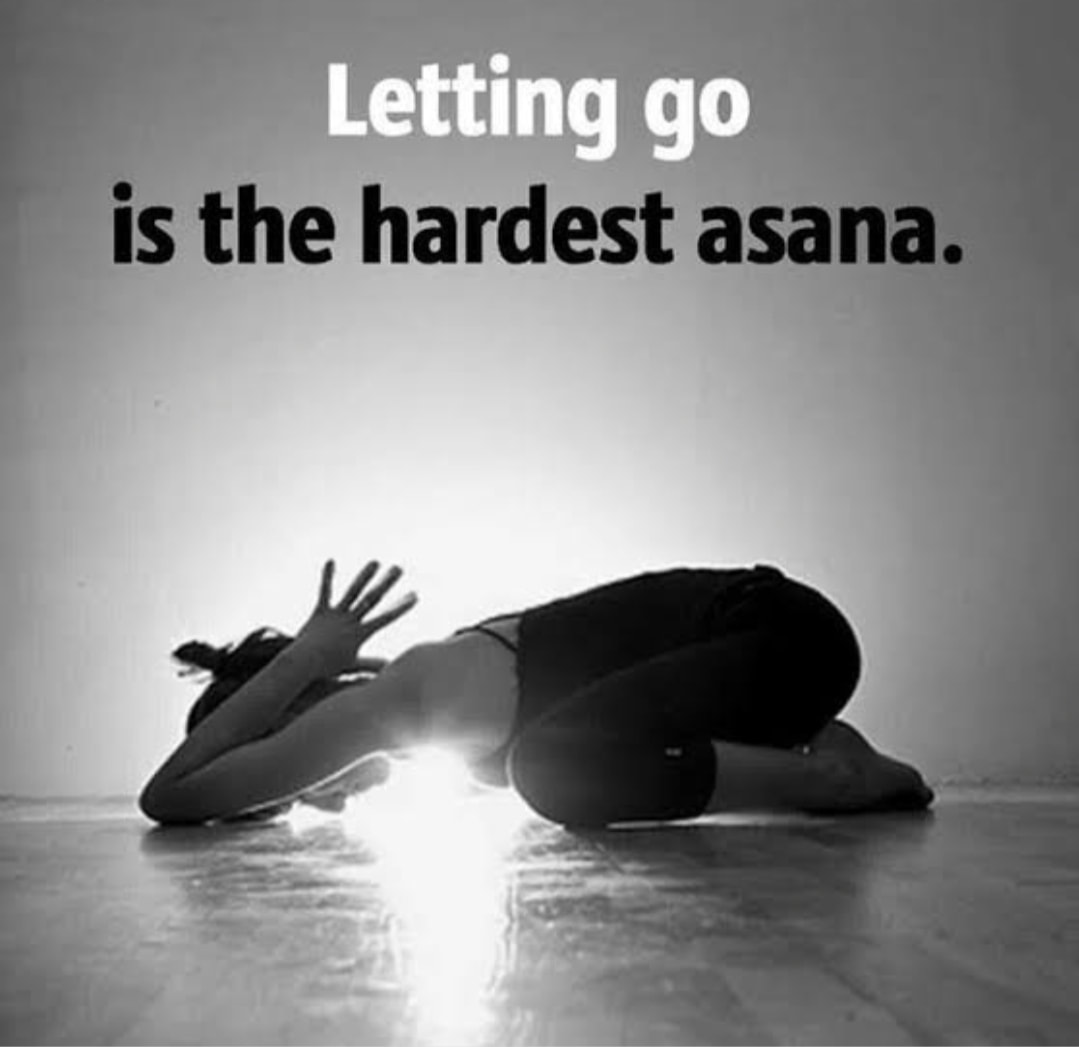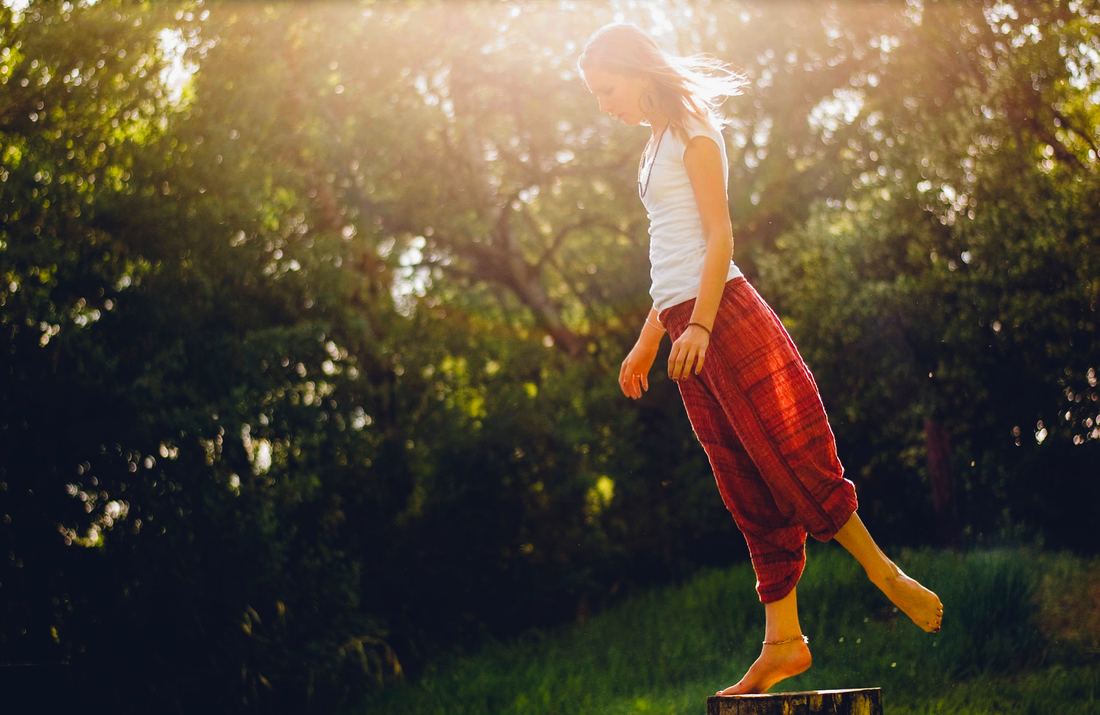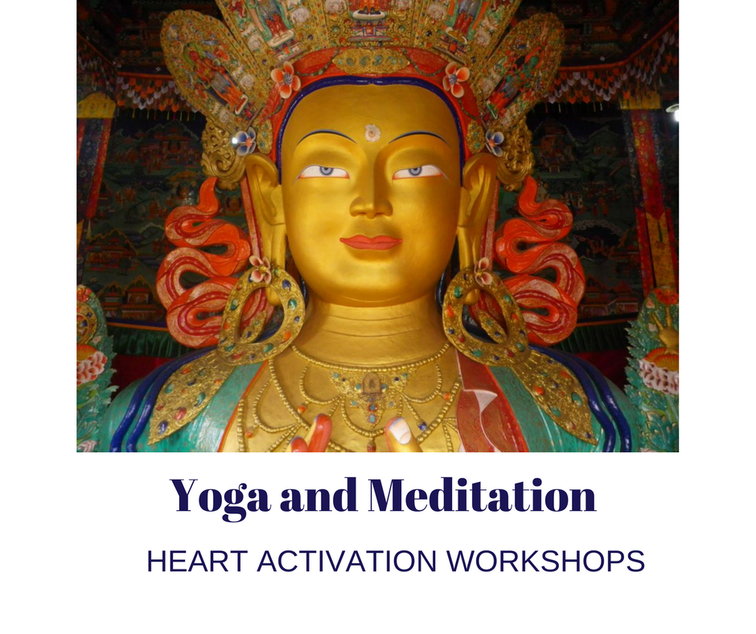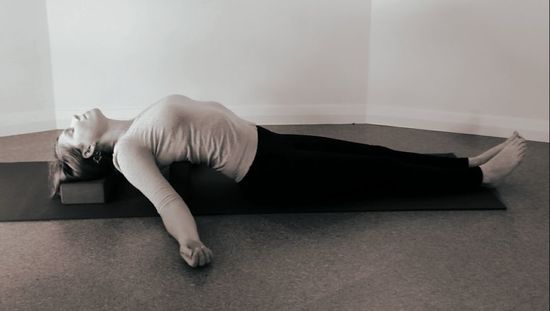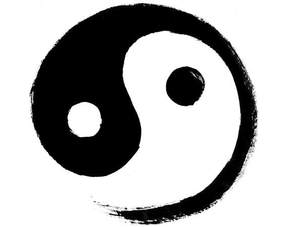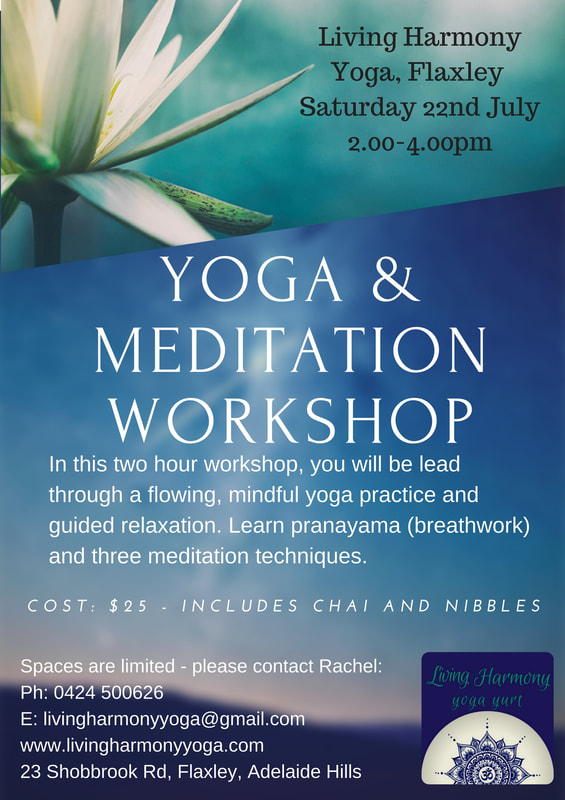|
The most challenging part of yoga is not about touching your toes or balancing on one leg. It can occur in the simplest poses - a child's pose, a deep stretch, even in savasana the final relaxation. It is about surrender. If COVID has taught us anything, it is that so much of our life is beyond our control. To make ourselves feel safe, to have some ground beneath our feet when all is swirling around us, we tighten, close down and contract. This gives a perception of control and holding onto something...but instead it does the opposite.
0 Comments
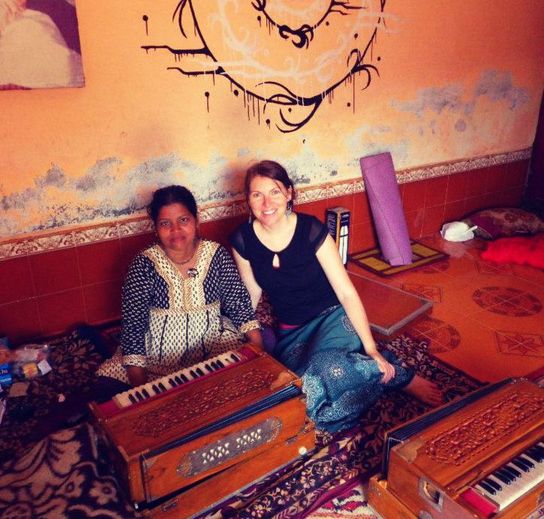 Some people feel that the chakras are a “bit out there’, “new agey’ or esoteric, a part of yoga that is perhaps not for them. What the chakras provide us is this map of getting to understand ourselves better on so many levels, from our physical and physiological functions to our emotional, mental and spiritual wellbeing. It is not important whether you believe you have a subtle body or not. These are practical tools which can help you focus and identify places in life where you may feel inhibited and need some help to free up. In my own experience, a 7 day chakra yoga workshop at an Indian ashram triggered a deeper understanding within me. I was already reflecting on where I felt stuck and why I felt I wasn’t blossoming in life, there was something holding me back. I realised that I lacked a lot of self confidence in how I was living my life, about where I wanted to go and lacked the power to bring things into fruition (manipura chakra, solar plexus). That made me unable to speak my own truth, express my opinions and live an authentic life (visshuddhi chakra, throat). I focussed on strengthening manipura chakra because without the fire within my belly, I couldn’t translate my desires and longings into reality - it was lacking power and energy behind it. My digestion was sluggish, I had a weak core and no discipline. SO I started with discipline, by beginning a daily yoga practice which included twists and corework and I looked at my diet. I was living in the foothills of the Himalayas and the weather was very cold. I went to the local market to buy a jumper – the only one in my size was bright yellow. I had such an aversion to wearing YELLOW (my aha moment – the colour of manipura chakra). It was the colour I needed! I started wearing this yellow jumper everyday while I was doing all these practices and soon I felt this warming strength come into my body – that helped me gain confidence to start working on the block in my throat. I enrolled into singing and chanting classes – I went every second day and often the first ten minutes of trying to tune my voice to the harmonium resulted in constantly clearing my throat, removing all these blockages and beliefs I had around my own voice and opening up to a sound I had never heard before. If you had told me back then that I would become a yoga teacher, I would never have believed that!!! I didn’t have the confidence to speak in front of a group and felt I couldn’t speak with any authenticity. I hated the sound of my own voice. Within a few months, I challenged myself to perform a song at an open mic night on a roof top bar! I don’t know how good I was but it was not the point – I had gained confidence to sing my heart out and share my love of music!! And when I came back to Australia, I enrolled into a yoga teacher training program because I knew these practices were real and I had experienced the effect on me – not only on my body and mind but in my life. I really encourage you if you are interested in making some changes within yourself, to start looking into the chakras. These are real, grounded ways to work with yourself. Once we align our chakras, then everything else falls into place. I am so excited about the upcoming workshop (September and October) which will introduce you to the healing powers of the chakras. I don’t know about you but I definitely don’t like to exercise in a gym – mirrors, sweat smell, men pumping weights, loud doof doof music. I prefer the peace of yoga. You might think of yoga as a practice for relaxation. But yoga can equally be a practice for fitness. Fitness is measured on a number of factors – the effect on the cardiovascular system; strength; flexibility and our body’s composition of muscle to fat. Fitness regimes often include high intensity as well as resistance training (weights). Some yoga practices can include both of these. High intensity comes from dynamic practices such as sun salutations, and strong standing postures where our heart rate is increased and we are building heat in the body. In yoga we use our own body weight for resistance training – this means you no longer need to pay to go to a gym and use all that equipment as you can practice anywhere at anytime using your own weight! 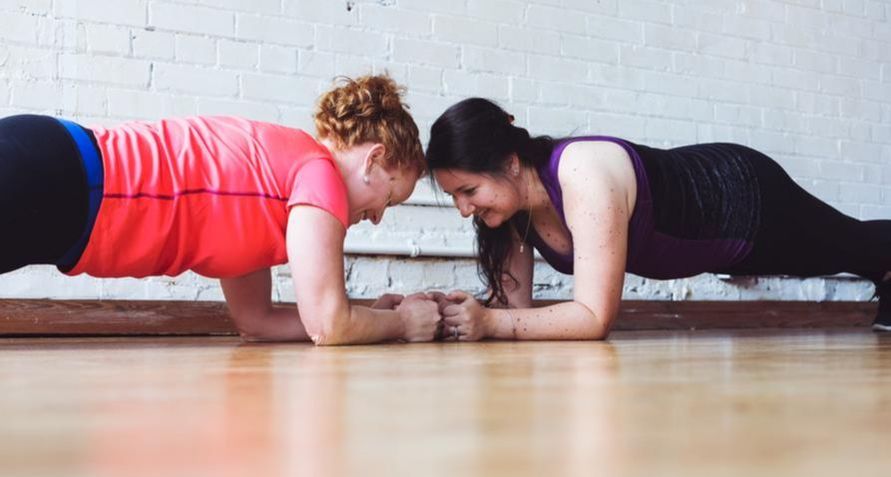 At a university study in the United states, college students were signed up to an 8 week course where they focussed on 10 minutes of pranayama (breathwork); 15 minutes warm up; 50 minutes asana (physical postures) and 10 minutes of meditation. ‘After eight weeks, the students' muscular strength had increased by as much as 31 percent, muscular endurance by 57 percent, flexibility by as much as 188 percent, and VO2max (volume of oxygen uptake) by 7 percent’ (Alisa Bouman, Yoga Journal). The VO2max result surprised researchers who did not expect to see an increase within such a short space of time. The pranayama practices and the deep stretching into the sides of the torso, the back and chest help free up the ribs which enhances our ability to increase uptake of oxygen and remove stale air from the lungs. Yoga also develops a strong core that is more beneficial than a six pack – the core in yoga is a much deeper layer that strengthens postural muscles which support our whole skeletal alignment. Focussing on a six pack or flat belly tightens the surface layer muscles which can hinder breathing and does not develop the inner layer of support for the spine. But the best offering yoga brings is way beyond the physical. It provides us with an opportunity to turn inward, tune into our body’s internal wisdom and that is what brings us into maximum fitness - a true holistic sense of health and wellbeing. "Yoga class is merely a laboratory for how to be in harmony with the body in every activity outside of yoga. This improved physical wellness and fluidity enhance not just the physical well-being but also permeate all levels of our being." (Dina Amsterdam, Is Yoga Enough to Keep you fit, Yoga Journal) Still not convinced? Come and try this for yourself. Living Harmony Yoga is commencing an 8 week Yoga for Fitness course on Mondays nights. The class structure will follow that of the study - pranayama, warm up, asana and meditation with a focus on core work, strengthening all over body plus targeting specific muscles (such as glutes, upper arms, lower back) and building the heart rate. There will be time to stretch out, rest and rebalance. Get ready for summer! This 8 week course starts after the school holidays, Mondays, 15th October to 3rd December, 6:15pm – 7.30pm. COST: $120 Further reading: https://www.yogajournal.com/poses/is-yoga-enough-to-keep-you-fit Spring is the time to get motivated and start creating positive routines for health and wellbeing. We often feel so much better with the sun shining and weather warming. It’s a natural cycle of seasons – in Winter we eat heavier, richer food, tend to put on extra kilos to keep warm, and are less inclined to get outside and get moving. Spring provides a sense of new beginnings, a time of natural detox when the body wants to shed the extra weight, shift toward lighter food and begin to exercise more in preparation for the warmer weather.
It’s not easy to suddenly switch out of Winter sluggishness, particularly when the weather is still cool! We need to do some things to build our motivation! Here are some of my tips:
Measurable – what is the measure of reaching your goal? how will you know you have reached it? Attainable – be realistic in what you can achieve within the timeframe you set. Start small to set yourself up for success. Think about time, money and effort then work out what fits with your life. Relevant – setting a heart felt intention is key. If your goal is not in alignment with your heart and where you want to head then it will be difficult to achieve. Timely – give yourself a schedule with check in points to re-evaluate along the way, to note and celebrate your progress. Without discipline, routine and regularity we will not achieve the goals and we will not experience the full benefit of a regular yoga practice. Once we set up the habit and begin to notice that we feel better physically, emotionally and mentally, then intrinsic motivation kicks in – this is what carries us forward and onward. It becomes an essential part of our life as sleeping and eating. It takes effort to get to this point but it is completely worthwhile. To support your health and wellness goals I look forward to seeing you on the mat. Wouldn’t you love to find the OFF switch sometimes to shut down your busy mind and over stimulated nervous system so that finally, you could rest deeply? Yoga nidra is a special practice that brings you into a very deep state of rest. “Nidra” means sleep. But this is not any ordinary sleep – the body sleeps as the mind remains lightly aware, taking us into very deep states of relaxation. So many things we do to relax are not actually resting for the body and mind. Think of the things you might do to relax – perhaps watch a movie, catch up with friends, go for a walk or bike ride, gardening, cooking – all might be enjoyable and worthwhile but they do not switch off our over burdened nervous system. While we are receiving input from the external world, our nervous system is fired up sending data to the brain for processing. In yoga nidra, we shut down the sense organs and turn inward to reduce the nerve impulses to the brain. We activate the parasympathetic nervous system which is our rest and digest mode.
Our lives are so busy, full of activity, distraction, movement, planning, doing – all very yang-like, leading us away from inner balance. We need to cultivate opposite qualities like calming, stillness and surrender (yin aspects) to settle into equilibrium. Because modern living is so out of balance, yin yoga is the perfect practice to counteract this and return us to harmony.
We carry layers of tension – physical, emotional and mental. Yin is a practice of undoing, dropping tension from the deepest parts of our being. As we sink into the pose, we become still and allow the body and mind to release what needs releasing. In yin we spend a long time in a pose, to move the stretch deep into the body, targeting joints and connective tissue. As these tissues are strong, the way to massage and release tightness is a gentle tug over time (usually a few minutes). The body responds by lengthening, strengthening the fibres, improving the flow of fluids and energy into that area. The main connective tissue targeted is fascia, which covers everything in our body, creating a 3D-like matrix. Fascia allows muscles and other tissues to move and slide over one another when well lubricated. As we age, are injured, even when we sleep, fascia can become dry and stuck together, leaving us to feel “shrink-wrapped” in our own body. Yin restores and hydrates fascia enabling improved joint range of motion, flexibility and suppleness. Staying in a pose for a few minutes can feel challenging, especially if the sensations are strong or the mind is busy. We use mindfulness techniques to rest awareness with the breath and on the sensations arising. We sit with ourselves in the raw experience of the present moment – with no distractions, no need to avoid or change the experience, just sitting with acceptance. We become the observer to the never-ending waves of thoughts, feelings, plans, memories, allowing them to come and go like waves moving onto a beach and returning to the ocean – without grasping, without following, without indulging. As we free ourselves from our constant mental distractions, we learn to be, we learn to rest in our true nature and experience our own inner bliss and come to accept the impermanent, ever-changing flow of life. We drop the resistance, we release the tension, we undo what needs undoing and surrender into the present. Suggested Pose (photo above): supported fish – this pose counteracts rounded shoulders often caused from spending long hours at computers or driving; opens the heart and lungs to enhance breathing; releases the neck, shoulders and thoracic spine. Come into the pose with the knees bent and lower your upper back over a prop (block or book), placing it at the base of the shoulder blades (bra line), allowing the shoulders to hang freely. Depending on the height of the prop, you may need another one to support your head, or rest your head to the floor – only take your neck back into a gentle arch, allowing the throat to open and soften. If your back is comfortable, extend the legs, otherwise keep them bent. If the prop is too high for your spine, use a rolled up towel placed underneath the shoulder blades. Rest here for at least 3 minutes, explore softening the muscles around the ribcage and bringing the breath into the front, side and back ribs. To come out, bend the knees, engage your core, bend the arms and use the forearms to help slowly bring you off the prop, gently roll yourself to the side and lie flat on your back for another couple of minutes. To explore this practice deeper, come and join the Winter Nourish Yin Yoga workshop, 19th August. Or join the weekly Yin class, Tuesdays at 5.45pm. Contact Rachel for more information. |
